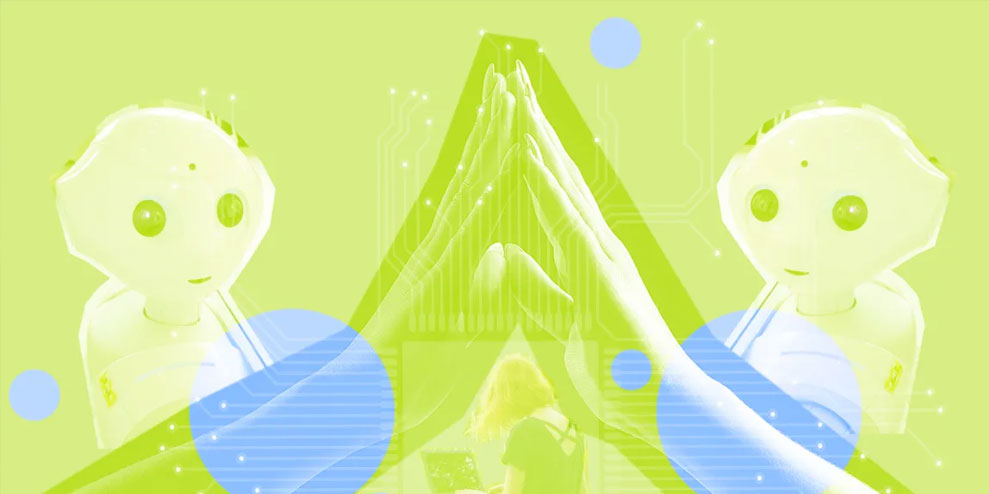From freelance and flexible work to chatbots, 2020 is poised to be a year of continued change.
Over the past few years, the workplace has changed almost beyond recognition. With an increase in freelancers, more remote workers than ever, and advances in technology all shaping the way we work, the coming year is set to be big. Here are some of the key trends.
THE GIG ECONOMY AND FLEXIBLE WORK
The past few years have seen a dramatic increase in the number of people taking part in the gig economy by trading in one long-term position for shorter-term or more flexible work.
Temps, contractors, freelancers and remote workers all fall into this category, often working for companies for shorter amounts of time, on project-based or ad hoc work. For some, this is a way to build a more flexible life, working outside of traditional working hours, or working for multiple companies at once. Intuit actually estimates that by 2020, over 40% of U.S. workers will be independent contractors.
It’s not just how people work but where that’s changing. There has been a huge shift over the past few years in terms of remote working. A survey by the Global Workplace Analytics and FlexJobs found that remote work has grown 91% over the last 10 years, and various research has concluded that by 2020, half of us will be working remotely in some form.
Some companies now operate entirely remotely, with no communal office space and employees spanning multiple time zones, some companies have one or two remote team members, and some offer all employees the option to work remotely for a day or two per week.
This kind of work has a huge impact on HR, from the hiring/onboarding process to company structure to communication practices when dealing with part-time workers. While this undoubtedly means there are challenges to overcome, this ever-increasing flexible working trend isn’t going anywhere. HR leaders need to take a look at just what the gig economy means for their company, and how best to cope with the demands of short-term, flexible, and freelance workers. This can be through the increased use of performance management tools, regular team-wide video conference sessions, or revamping onboarding processes.
PEOPLE ENABLEMENT
People enablement was highlighted as one of our 2019 trends, and it’s still set to have a huge impact in 2020. This more holistic, less top-down focused approach enables employees to unleash their potential and progress in their own way.
The concept relies on three core pillars:
- Professional growth: accelerating the speed at which managers and individuals learn and grow
- Clarity and alignment: keeping everyone aligned on strategy, objectives, and process
- Value and impact: building a culture where everyone feels valued and receives recognition
By implementing all three of these things, companies can ensure their people feel in control of their work and progression, increasing overall engagement, growth, and productivity. People enablement has a major impact on the employee experience, something that helps companies outperform those with less people-focused practices.
HR CHATBOTS
The use of chatbots may already be common in many HR departments, as well as IT help and customer service type roles, but there will be a big increase in this type of communication in 2020.
Using chatbots can be an incredibly useful practice for HR. These automated conversational tools can field the low-level, FAQ inquiries, and processes such as candidate screening, and help HR free up valuable time to focus on more in-depth conversations and interactions.
Using chatbots for initial interactions also means that the average response time is quicker, considerably speeding up processes by swiftly taking care of smaller issues or queries that arise. There is also a potential for them to be used in an interview capacity to replace the traditional screening phone interview, for example. The bots can ask potential candidates some initial questions, which HR can then analyze the answers to, before deciding who to invite to interview in person.
ARTIFICIAL INTELLIGENCE
Last year, we shared that HR in 2019 would focus on more data-driven decisions, with analytics informing more and more of the work done. HR is inherently people-focused, so there’s a lot of data, and it’s key to make the most of it all so that everyone gets the best experience possible.
This still holds true for 2020 as there is an ever-growing focus on more automated approaches. Except it’s not just data analysis now. Newer practices are being introduced which increase automation across the board. Research from Gartner actually predicts that in 2020, one in five workers engaged mainly in non-routine tasks will rely on artificial intelligence to help them do their jobs.
AI will likely never entirely take over the more ‘human’ side of HR, but it will require striking the balance between human and technological processes, particularly in the recruitment phase. The idea isn’t to remove the human element but to establish a more streamlined approach where AI is used as a tool to assist with and elevate
current processes, elevating efficiency with tasks such as candidate screening, onboarding, and administrative tasks such as holiday requests, interview scheduling, and analytics.
All of these trends will likely have a big impact on the next few years in HR. However, it’s always important to focus on what works for your company and its people. Every company is unique and requires different practices. Keep in mind what works for your organization and what will help, not hinder, HR and the human connection.
–
This article first appeared in www.fastcompany.com
Seeking to build and grow your brand using the force of consumer insight, strategic foresight, creative disruption and technology prowess? Talk to us at +9714 3867728 or mail: info@groupisd.com or visit www.groupisd.com



